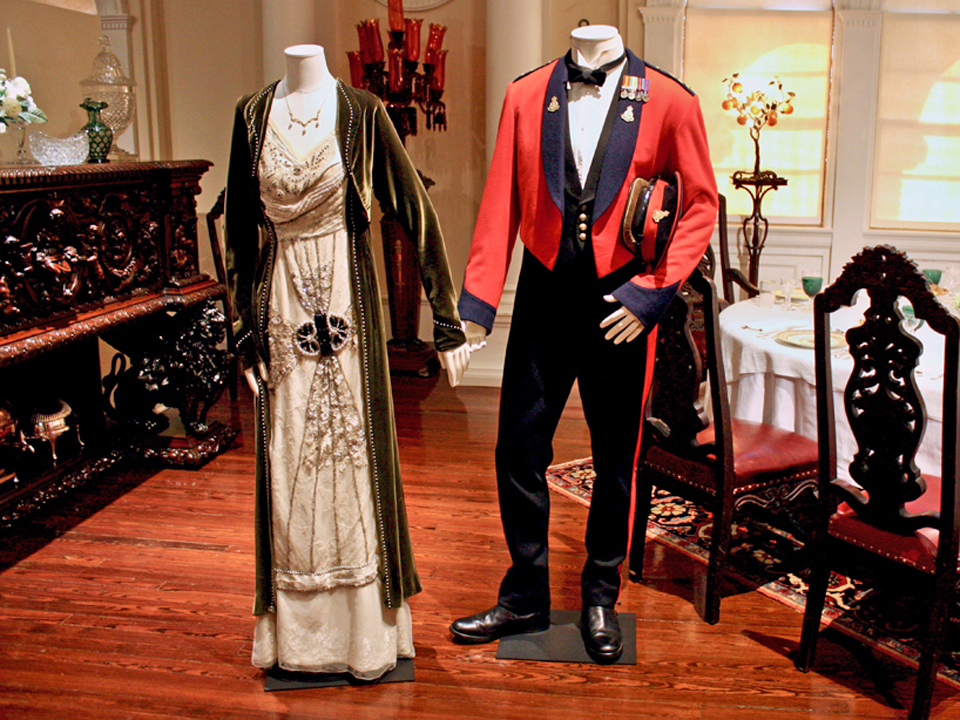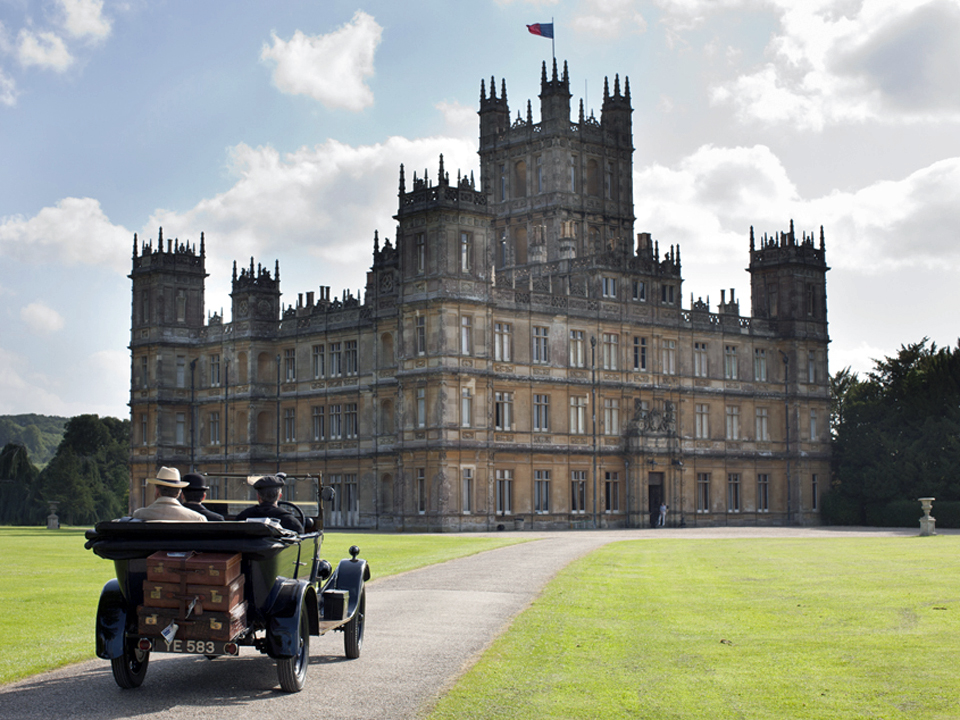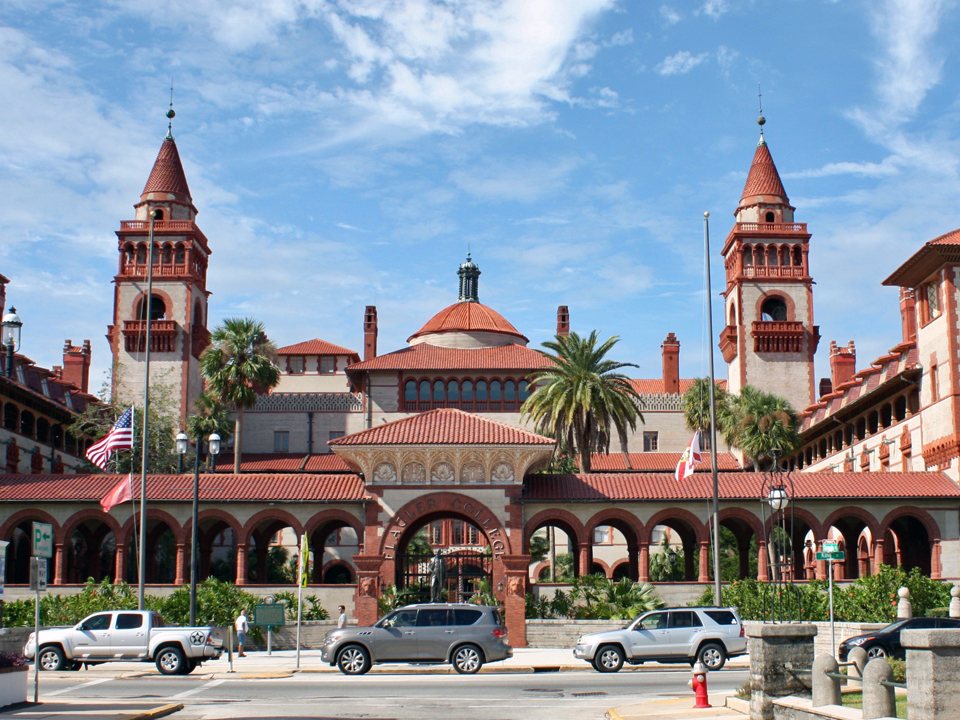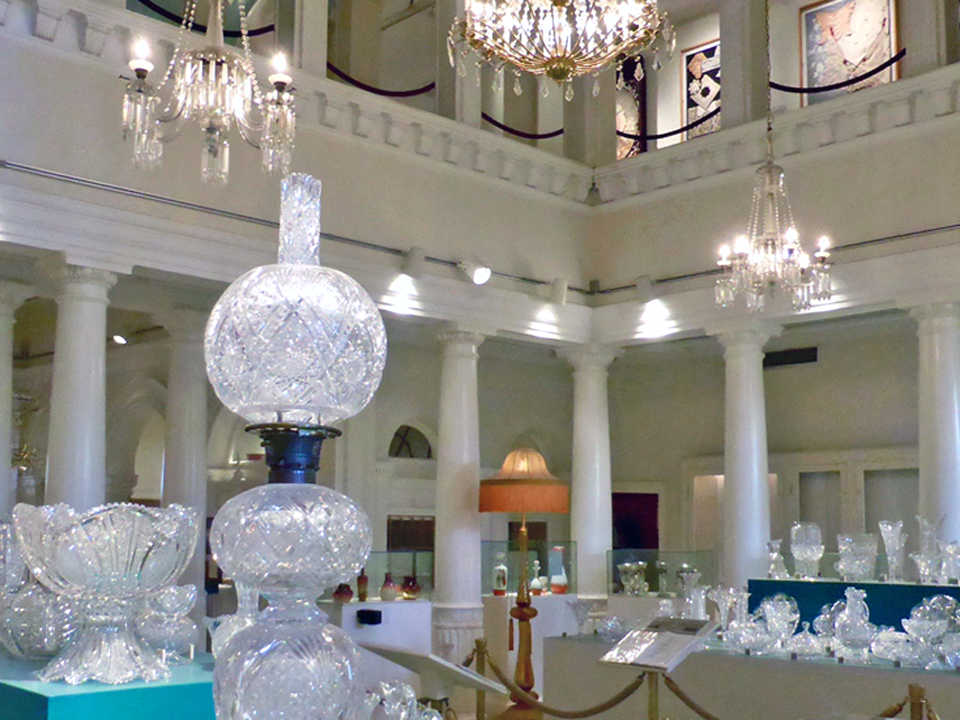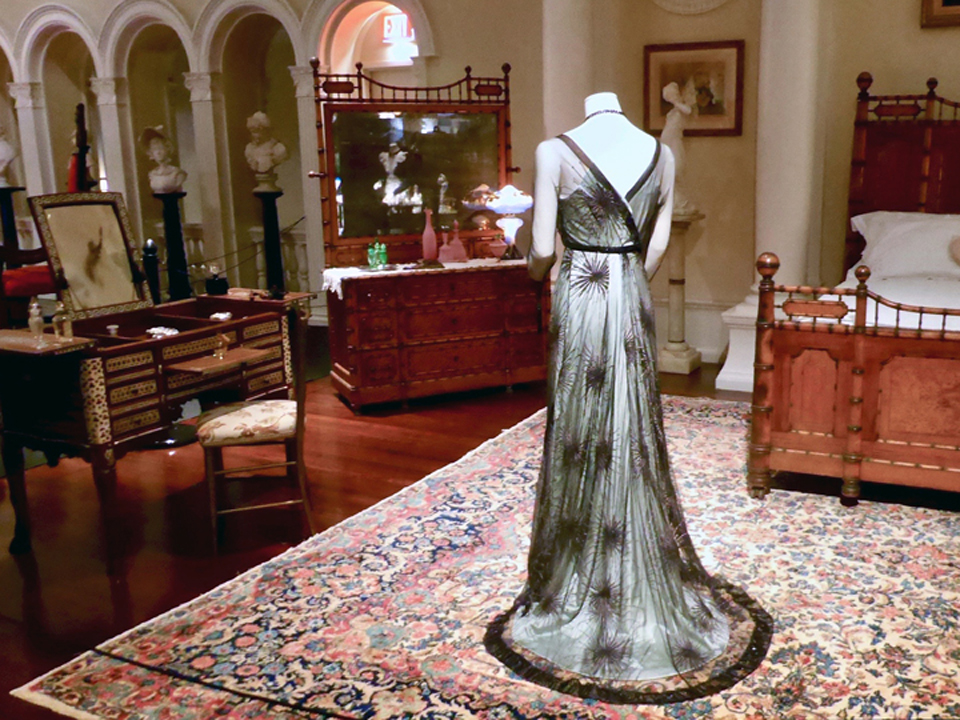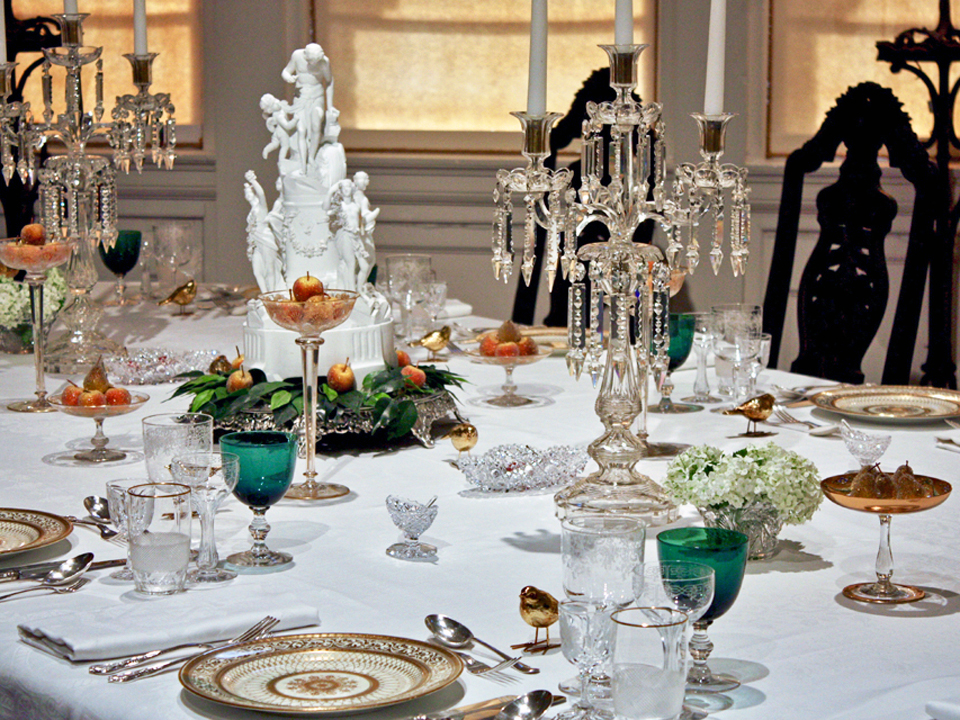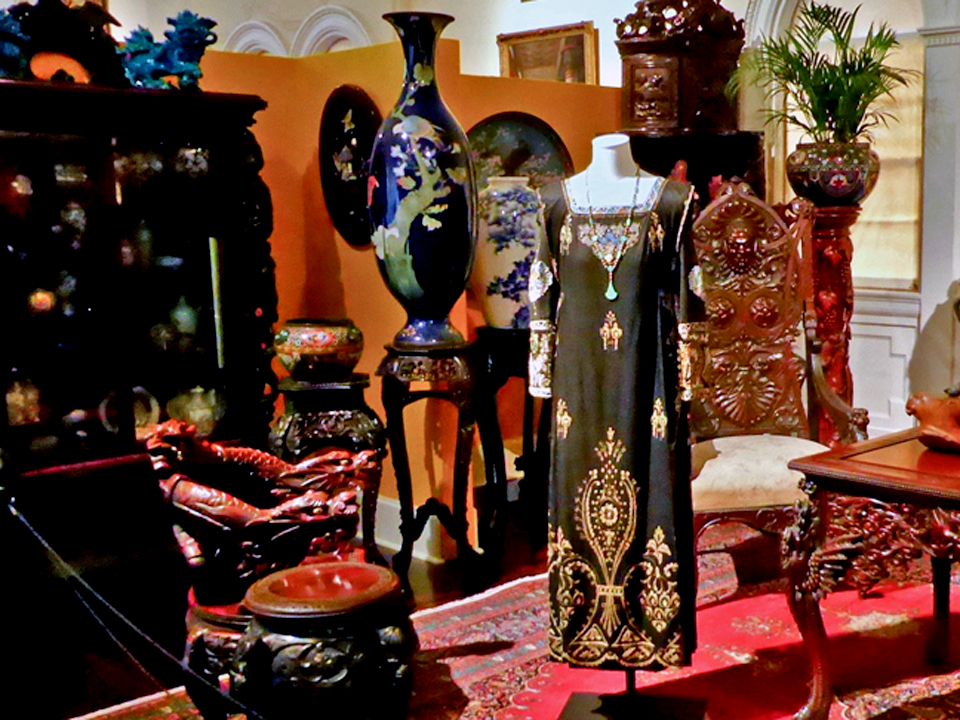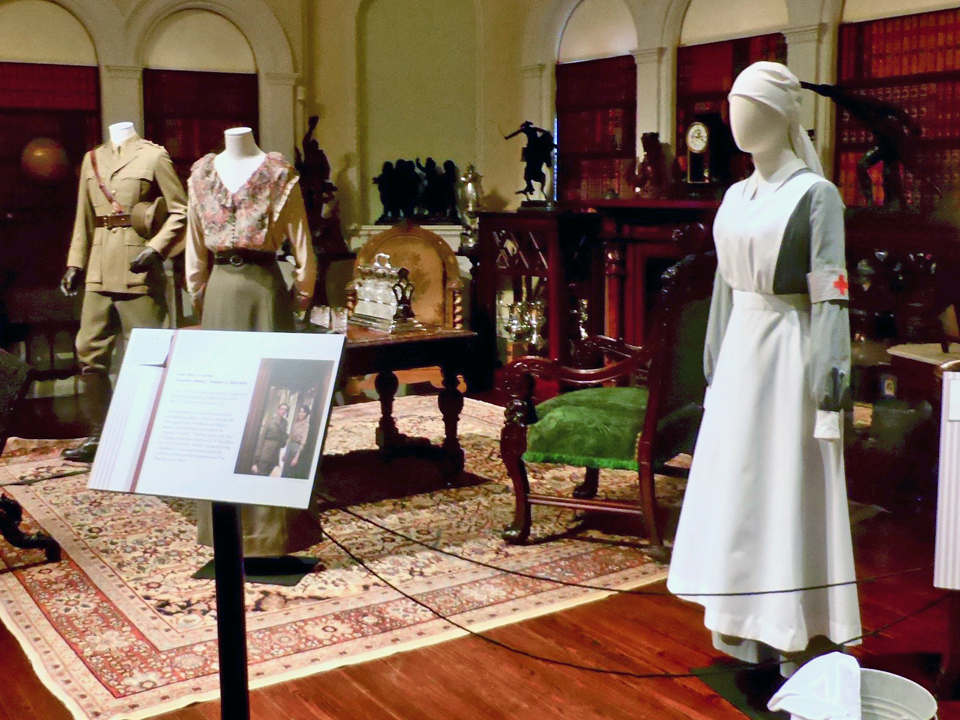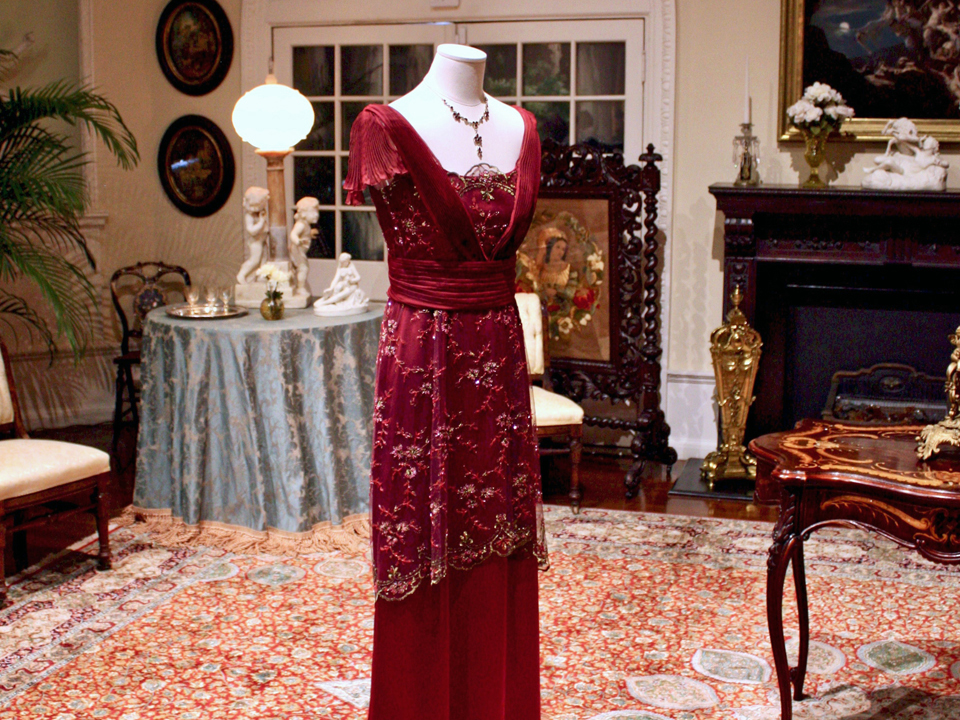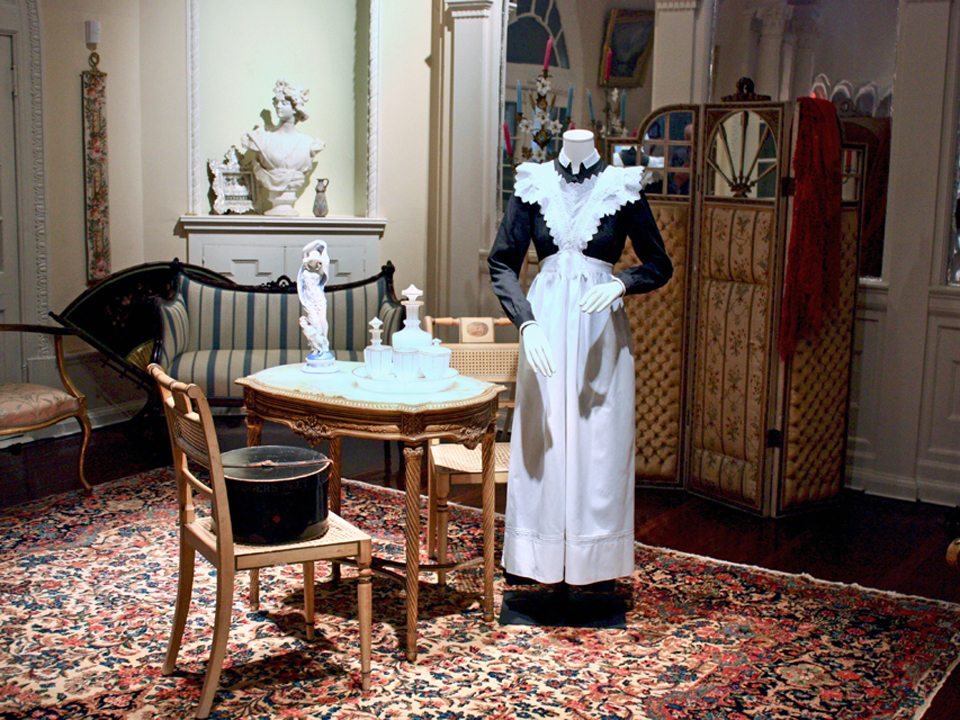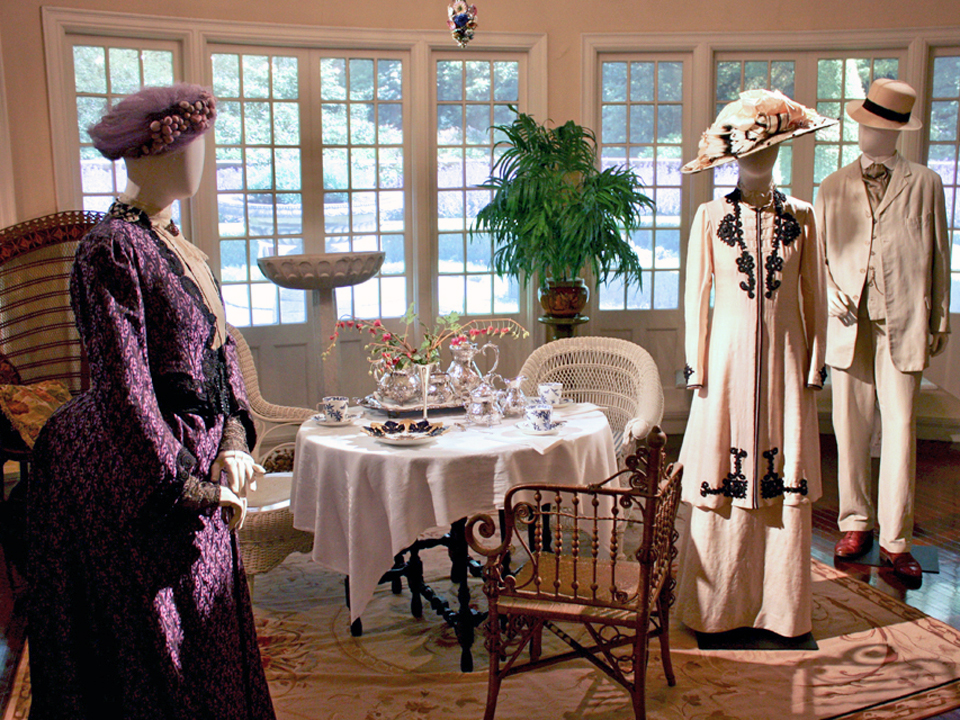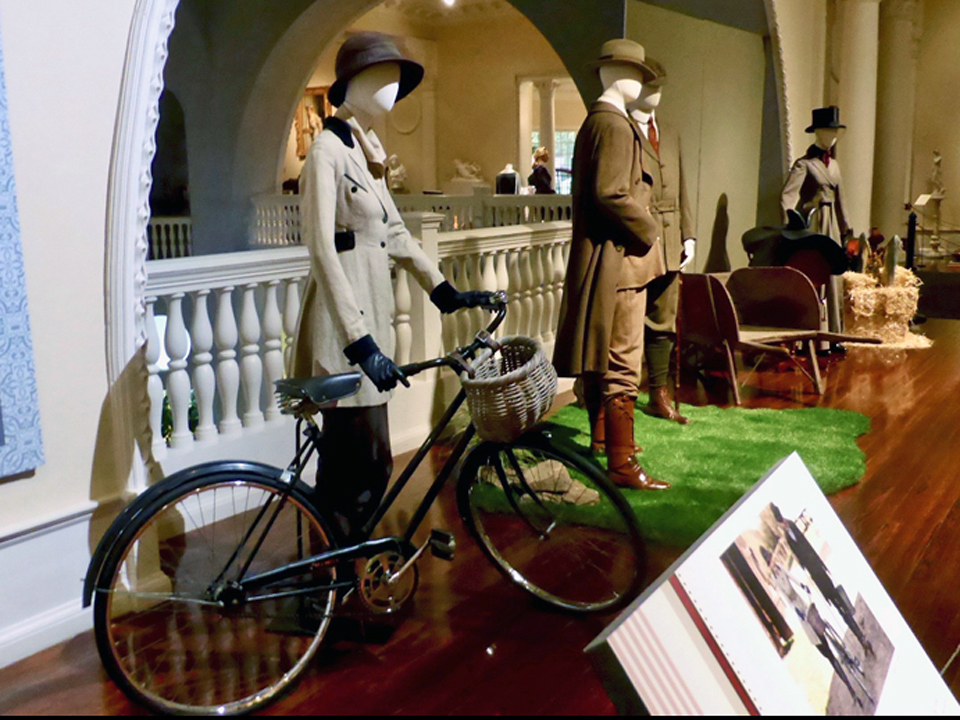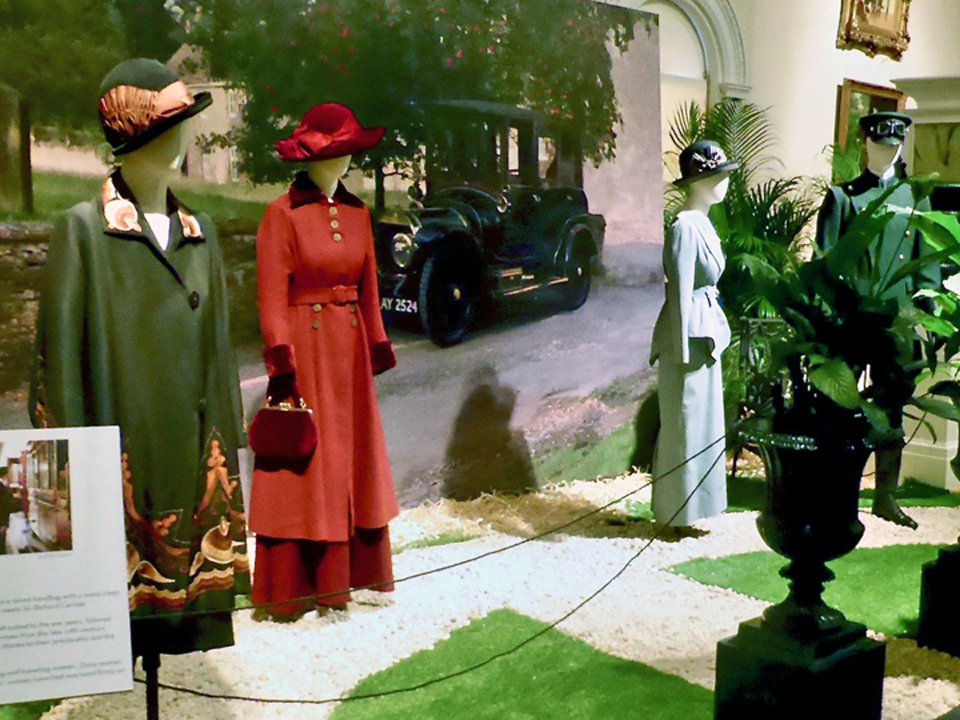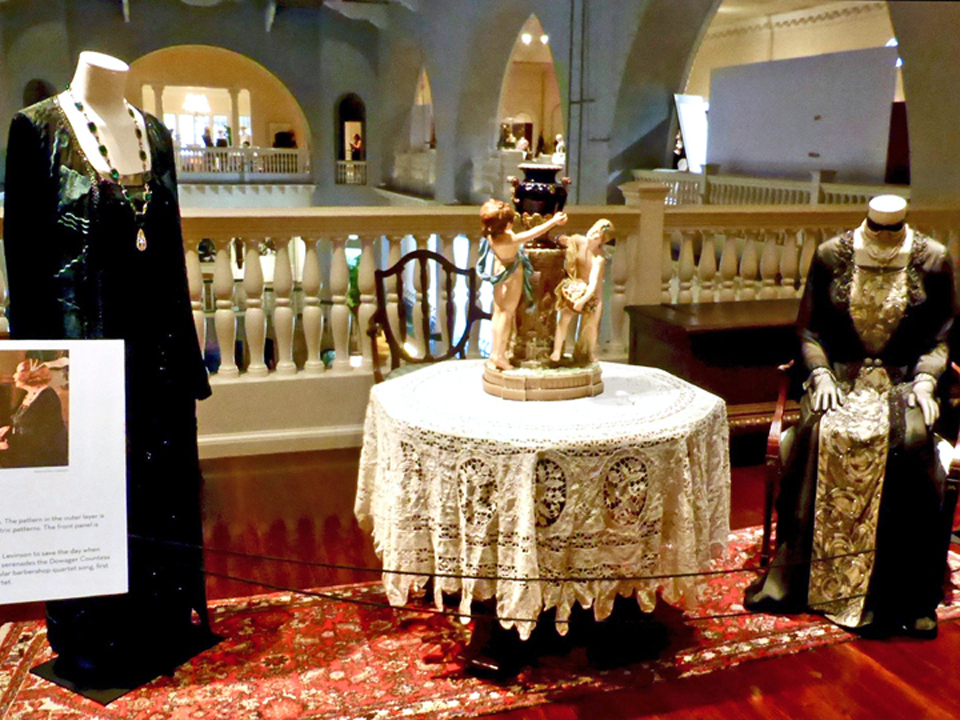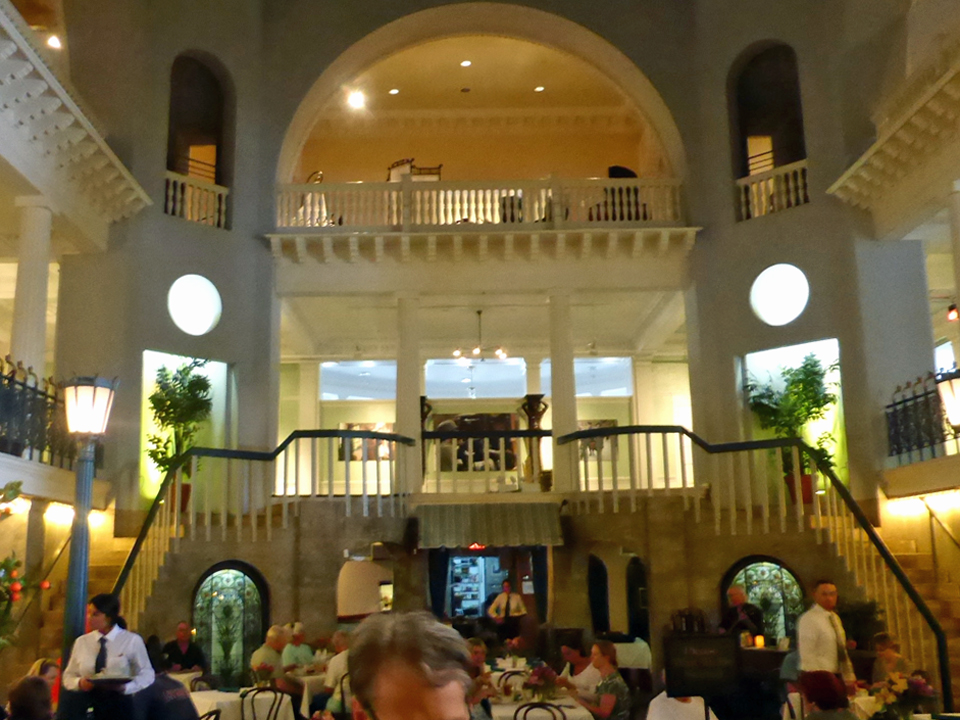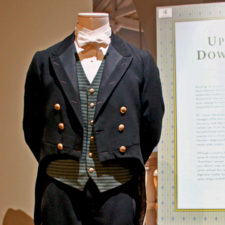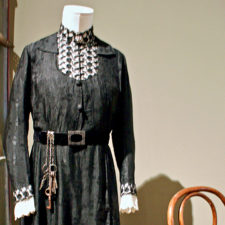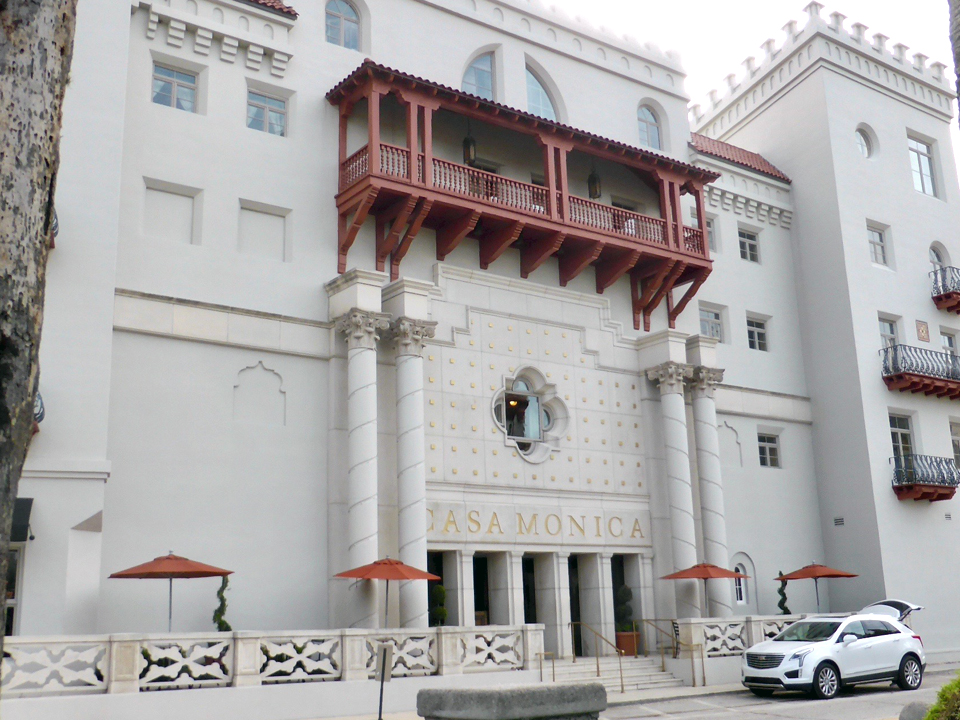St. Augustine, Florida: a step back to grandeur of the Gilded Age and Downton Abbey
Lightner Museum, St. Augustine, Florida. Photo credit: FloridasHistoricCoast.com
Sunbirds and vacationers heading south have a unique opportunity to step back to the Gilded Age in St. Augustine, Florida. The city has long been known for the magnificent hotels built by Industrialist Henry Flagler, who made the city the epitome of a Gilded Age resort. And now one of his former properties has been transformed for a special exhibition, “Dressing Downton: Changing Fashion for Changing Times.”
Whether you want to see the intricate details of the costumes close-up, have an interest in how this unique period in history shaped fashion, or simply enjoy being immersed in Gilded Age splendor, this is an exhibition that should not be missed.
Countess Cora and the Earl of Grantham, Lightner Museum, St. Augustine, Florida. Photo by Roger Fasteson
It is the final opportunity for fans of the highly acclaimed “Downton Abbey” PBS television series to see this traveling exhibition of 36 of the series’ costumes, from servant’s uniforms to elaborate gowns. The exhibition runs through January 7, 2018.
“Dressing Downton: Changing Fashion for Changing Times” has been a huge success throughout the United States. It began in February, 2017, at the Biltmore Estate in Asheville, North Carolina.
Highclere Castle, Highclere Park, Newbury, England. Photo credit FloridasHistoricCoast.com
This ultimate showing is in St. Augustine’s Lightner Museum, which was formerly the Alcazar Hotel. Henry Flagler built the hotel in 1888 after amassing a fortune as a cofounder of Standard Oil.
Like Flagler’s adjacent hotel, The Ponce de Léon, it had the finest amenities of its day and was a place for the rich, famous, and influential from around the world to see and be seen. One might imagine the fictional family of the 7th Earl of Grantham wintering here after visiting family in Newport.
Flagler College, the former Ponce de Léon Hotel, St. Augustine, Florida. Photo by Roger Fasteson
Unfortunately for the privileged few, the grandeur of this age, here and abroad, could not be sustained. Flagler’s hotels, like the Crawley family, suffered the effects of changing times and the economy.
Otto Lightner, founder of Hobbies Magazine, bought the former Alcazar Hotel in 1947 for $150,000. He needed a place to house his collection of turn of the century fine and decorative art and furniture. Many of his acquisitions, from antique mechanical musical instruments to Tiffany glass, were from Depression-era estate auctions in Chicago.
The Lightner Museum opened in 1948. He died in 1950 and left the building in trust to the city of St. Augustine as a permanent museum for his collections. It is on the National Register of Historic Places.
The front of the building is used for St. Augustine’s local government. The Alcazar Room, the former ladies parlor, is used for City Commission meetings. The King and Queen of Spain, who visited in 2015 as part of the City’s 450th anniversary celebration, are among the guests of honor.
American Brilliant Cut Glass Room, Lightner Museum, St. Augustine, Florida. Photo by Roger Fasteson
The Lightner Museum is in the back portion, site of the former casino, steam baths, salons, bowling alley and a swimming pool that was the largest in the world when it was built. The American Brilliant Cut Glass Room once served as a room in which to lounge after an exhausting day at the spa.
The museum’s Grand Ballroom Gallery is the backdrop for the Downton Abbey exhibit. Costumes and accessories are set in vignettes and paired with contemporaneous fine art and furniture from the museum collection, some on view for the first time.
Lady Mary’s green silk evening dress, Lightner Museum, St. Augustine, Florida. Photo by Roger Fasteson
Dining room setting for Downton exhibit at Lightner Museum, St. Augustine, Florida. Photo by Roger Fasteson
Some of the exhibit’s costumes were meticulously researched and made from elaborate original period fabrics, exquisite beading, delicate embroidery, and intricate lace. Others were recreations based on old photographs, paintings, magazine pictures and patterns. Some costumes were mostly original, perhaps with some vintage trim.
Lady Edith’s dress at London literary party , Lightner Museum, St. Augustine, Florida. Photo by Roger Fasteson
Most were by the London-based costume company Cosprop, which is known historic accuracy. It supplied the costumes for 29 Academy Award nominated films.
Sir Richard Carlisle’s wool suit and Lord Grantham’s tweed country estate suit, Lightner Museum, St. Augustine, Florida. Photo by Roger Fasteson
The costumes range from a footman’s livery and country tweeds to Matthew Crawley’s World War I uniform, lavish gowns and Cora, the Countess of Grantham’s, feathered hat.
World War I costumes, Lightner Museum, St. Augustine, Florida. Photo by Roger Fasteson
Among the collection is a two-piece day dress often worn by actress Maggie Smith as the matriarch Violet Crawley, Dowager Countess of Grantham. It is in the half-mourning color of purple, allowed after an appropriate period of wearing black, in memory of family members lost in the sinking of the Titanic.
And then there’s the red satin dress worn by Lady Mary that scandalous night when she risked her reputation with a Turkish diplomat. It was restyled from a turn-of-the-century Spanish evening dress. Silk chiffon and embroidered lace was added.
Lady Mary’s red dress, Lightner Museum, St. Augustine, Florida. Photo by Roger Fasteson
In addition to being a fashion show, the exhibit chronicles the rapid social and political changes from 1912 to the mid-1920s. Downton Abbey began with the restrained post-Edwardian lifestyles of the aristocratic Crawley family and their servants at the time of the sinking of the Titanic in 1912.
It was an age of labor-intensive sets of rules and formalities. Much of an aristocrat’s life was devoted to dressing appropriately for for every activity and time of day. One’s pedigree, titles and manners were of the utmost importance.
Anna Bates’ Lady’s Maid uniform, worn when helping Lady Mary dress, Lightner Museum, St. Augustine, Florida. Photo by Roger Fasteson
The chronology begins with one of the Dowager Countess’ opulent gowns that required corsets and bustles to create the proper S-shape. Younger women, however, were beginning to wear looser high-waisted French fashions, like Lady Mary’s green silk evening dress, that might require stays but not corsets.
Dressing Downton: Changing Fashion for Changing Times, Lightner Museum, St. Augustine, Florida. Photo by Roger Fasteson
Clothing revealed one’s identity, as when the nouveau riche Sir Richard Carlisle dressed for a country outing in a dapper expertly-tailored three piece wool herringbone suit. When he complained of feeling too hot, Lady Mary pointed out that one should know that such heavy fabrics are suitable for a winter hunt, not a country walk.
The series and fashions continued through the tumult of World War 1 (1914-1918), a period that altered not only the social fabric of Great Britain, but also its hemlines. Wartime shortages made for more economical use of fabrics. Scarcity of other materials needed for combat, like steel for eyelets, resulted in styles becoming simplified.
Country attire, Lightner Museum, St. Augustine, Florida. Photo by Roger Fasteson
Practical tailored suits were worn by fashionable ladies. White tie and tails for men were replaced by short relaxed dinner jackets with black tie. The wool cord breeches and linen jacket Lady Edith wore to work on the farm were adaptations to the changing roles of women who needed to perform work previously done by men.
Lady Edith’s Arts and Crafts style coat, Lady Mary’s red wool coat with velvet trim, Lady Sybil’s tailored suit, and the chauffeur costume, Lightner Museum, St. Augustine, Florida. Photo by Roger Fasteson
The bold gold and black lavishly fur-trimmed coat worn by Martha Levinson, Cora, the Countess of Grantham’s American mother, is part of the exhibit. The flamboyant Mrs. Levinson’s chic Art Deco green dress and glitzy emerald necklace stand in sharp contrast to the post-Edwardian style dress and heirloom jewelry worn by the Dowager Countess.
Martha Levinson’s Art Deco dress and Dowager Countess’ dress, Lightner Museum, St. Augustine, Florida. Photo by Roger Fasteson
Traditional societal and gender roles and rules were underwent dramatic change in the Roaring 20s, when the tango, the Charleston, and American jazz were all the rage. There were daring new fashions. Free flowing gowns reflected a liberated era.
In olden days, a glimpse of stocking
Was looked on as something shocking.
But now, God knows,
Anything goes…
The world has gone mad today
And good’s bad today,
And black’s white today,
And day’s night today,
And that gent today
You gave a cent today
Once had several chateaux…
Anything goes.
“Anything Goes” by Cole Porter
Times changed and there is no going back. No going back, that is, unless you visit one of the treasures that has been preserved from the Gilded Age.
Ready to go?
Dressing Downton: Changing Fashion for Changing Times is in the Lightner Museum’s Grand Ballroom Gallery and overlooks the Café Alcazar, which is in the historic swimming pool area. An elegant Traditional English Tea is served there daily. ($55 per person for tickets)
Afternoon Tea in the swimming pool area, Lightner Museum, St. Augustine, Florida. Photo by Roger Fasteson
The similarities between Downton Abbey and the lavish Alcazar Hotel can be continued with the one hour Upstairs/Downstairs tour of areas usually closed to the public ($45). It is a behind-the-scenes glimpse of the lives of the staff and elite guests of the Alcazar Hotel during the Gilded Age.
Butler Mr. Carson uniform, Lightner Museum, St. Augustine, Florida. Photo by Roger Fasteson
Head Housekeeper Elsie Hughes’ uniform, Lightner Museum, St. Augustine, Florida. Photo by Roger Fasteson
Entrance to the museum and Dressing Downton exhibition: Adults $19.99, Seniors, college students and active military $14.99, Age 12-17 $9.99 Age 11 and younger free.
Visitors must enter the exhibition within the hour printed on the ticket.
Accommodations
Casa Monica Hotel, St. Augustine, Florida. Photo by Roger Fasteson
The Casa Monica Hotel retains its historic grandeur with a decor that includes Moorish columns and original art. It is the only one of the former Gilded Age hotels to presently serve as a hotel and is a National Trust Historic Hotel of America. From $169 per night plus $22 resort fee


